
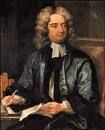





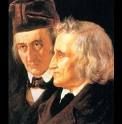

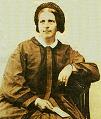


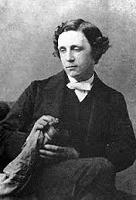


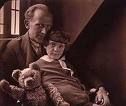


TLW's Children's Novelistscope™ (Children's Novelist Historyscope) |
By T.L. Winslow (TLW), the Historyscoper™ |
© Copyright by T.L. Winslow. All Rights Reserved. |
Original Pub. Date: May 30, 2015. Last Update: Dec. 23, 2024. |


















TLW's Children's Novelistscope™ (Children's Novelist Historyscope) |
By T.L. Winslow (TLW), the Historyscoper™ |
© Copyright by T.L. Winslow. All Rights Reserved. |
Original Pub. Date: May 30, 2015. Last Update: Dec. 23, 2024. |


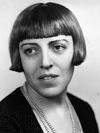







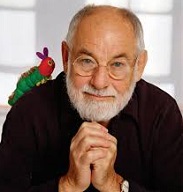




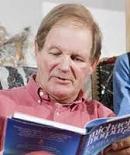





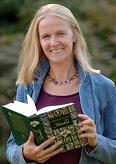


Westerners are not only known as history ignoramuses, but double dumbass history ignoramuses when it comes to children's novelist history. Since I'm the one-and-only Historyscoper (tm), let me quickly bring you up to speed before you dive into my Master Historyscope. Young adult literature will be included.
All-Time Children's Bestsellers.
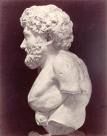
In 560 B.C.E. after starting out as a slave in Samos, living at the court of Croesus, meeting Solon, dining with the Seven Sages of Greece and Periander in Corinth, and visiting Athens and pissing-off Peisistratus, freed slave (hunchbacked dwarf) Aesop (-620 to -560) dies in Phrygia or Thrace, leaving Aesop's Fables (Aesopica), which are first pub. in Greek about 300 B.C.E. by Demetrius Phalerus, and in Latin about 25 B.C.E. by Phaedrus; they incl. The Fox and the Grapes, The Tortoise and the Hare, The North Wind and the Sun, and The Boy Who Cried Wolf; "God helps those who help themselves." The first English trans. is pub. by printer William Caxton (1422-92) on Mar. 26, 1484. In 1693 English philosopher John Locke (1632-1704) pub. Some Thoughts Concerning Education, which first suggests that they be read by children, because they are "apt to delight and entertain a child... yet afford useful reflection to a grown man. And if his memory retain them all his life after, he will not repent to find them there, amongst his manly thoughts and serious business. If his Aesop has pictures in it, it will entertain him much better, and encourage him to read when it carries the increase of knowledge with it. For such visible objects children hear talked of in vain, and without any satisfaction, whilst they have no ideas of them; those ideas being not to be had from sounds, but from the things themselves, or their pictures."

In 1530 Dutch "The Praise of Folly" Renaissance humanist Roman Catholic priest-scholar-theologian ("Prince of the Humanists") ("Crowning Glory of the Christian Humanists") Desiderius Erasmus (Lat. "beloved longing") Roterodamus (of Rotterdam) (Gerrit Gerritszoon) (1466-1536), founder of Humanism, first Humanist to earn a living by writing, and first scholar to divide the Bible into verses pub. A Little Book of Good Manners for Children (De Civilitate Morum Puerilium), and address to 11-y.-o. Henry of Burgundy, son of Prince Adolph of Veere, telling him how to act in the presence of adults; English trans. pub. in 1532; "Young bodies are like tender plants, which grow and become hardened to whatever shape you've trained them" - I'm an expert on softball and soft law?
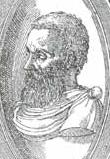
In 1550-3 Caravaggio-born Italian writer Giovanni Francesco Straparola (1480-1557) pub. Thirteen Facetious Nights (Tredici Piacevoli Notti) (2 vols.), the first European collection of fairy tales, containing 75 stories incl. "Beauty and the Beast", and "Puss in Boots", later used by Charles Perrault, William Shakespeare, and Moliere; modelled on Giovanni Boccaccio's "The Decameron", about guests at a 13-night party on Murano Island near Venice, who tell each other stories; Spanish trans. pub. in 1583; placed on the Prohibited Index in 1624.
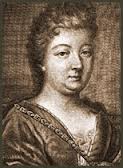
In 1697 Barneville-la-Bertran-born French writer Madame Marie-Catherine Le Jumel de Barneville, Baroness d'Aulnoy (1650-1705) pub. Fairy Tales (Les Contes des Fées) (2 vols.), coining the term "fairy tale".

In 1697 Paris-born French writer Charles Perrault (1628-1703) pub. Histoires ou Contes du Temps Passe (Les Contes de ma Mere l'Oye) (Tales of Long Ago); has the first picture of Mother Goose (Ma Mere l'Oye) on the cover, and incl. the stories of Cinderella, Sleeping Beauty, Little Red Riding Hood (incl. the grandmother in the bed scene), Puss in Boots, and multiple wife-killer Chevalier Raoul (Bluebeard) (based on Gilles de Rais, who was hanged in 1440); the Sleeping Beauty story is lifted from the earlier romances Perceforest (1330) and Giambattista Basile's Pentamerone (1634-6), where the handsome prince not only kisses but rapes her and splits; her glass slippers were supposed to be of fur, but Perrault mistranslated "pantoufles de vair" as "pantoufles de verre".

In 1704 Dublin-born Jonathan Swift (1667-1745) pub. A Tale of a Tub, his first major work, pub. anon.; a satire about three brothers, each representing a major branch of Christianity; too bad, despite getting his cousin Thomas to claim authorship, it damages his prospects in the Church of England. In 1726 he pub. Gulliver's Travels (Travels into Several Remote Nations of the World, in Four Parts, By Lemuel Gulliver, First a Surgeon, and then a Captain of Several Ships); Lemuel Gulliver visits the countries of Lilliput (6-in. tall people, their city of Mildendo surrounded by a 2.5-ft. wall), Blefuscu (ditto), Brobdingnag (60-ft. tall giants), Laputa (flying island of scientific quacks), Glubdubdrib (sorcerers), Luggnag (island where the Stuldbrugs live forever), the land of the Houyhnhnms, where intelligent horses rule over savage humanoid Yahoos, and Balnibarbi (inventors and projectors, capital Lagado); a satire of all things English, or just English modernism?

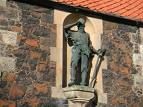

In 1706 London-born Daniel Defoe (De Foe) (1659-1731) pub. A Relation of the Apparition of Mrs. Veal. On Apr. 25, 1719 he pub. The Life and Strange Surprising Adventures of Robinson Crusoe; the first English novel?; based on the life of Scottish sailor Alexander Selkirk (1676-1721); spends 24 years on a desert island, where he is saved from cannibals by Friday on guess what day, and makes an umbrella out of skins; how white Euros can achieve salvation via work, the conquering of loneliness, and recognition of the inequality of human relations; "The aptest treatise on natural education" (Jean-Jacques Rousseau). In 1720 Defoe pub. The Life, Adventures and Piracies of the Famous Captain Singleton; about an Englishman stolen as a child from his well-to-do family and raised by Gypsies. In 1722 he pub. The Fortunes and Misfortunes of the Famous Moll Flanders; (picaresque); "Who was Born in Newgate, and during a Life of continu'd Variety for Threescore Years, besides her Childhood, was Twelve Year a Whore, five times a Wife (whereof once to her own Brother), Twelve Year a Thief, Eight Year a Transported Felon in Virginia, at last grew Rich, liv'd Honest, and died a Penitent. Written from her own Memorandums"; also The History and Remarkable Life of the Truly Honorable Colonel Jack, Another Robinson Crusoe (Col. Jacque, commonly call'd Col. Jack, who was Born a Gentleman, put 'Prentice to a Pick-Pocket, was Six and Twenty Years a Thief, and then Kidnapp'd to Virginia, Came back a Merchant; was Five times married to Four Whores; went into the Wars, behav'd bravely, got Preferment, was made Colonel of a Regiment, came over, and fled with the Chevalier, is still abroad compleating a Life of Wonders, and resolves to dye a General). In 1723 he pub. The Highland Rogue; Or, The Memorable Actions of the Celebrated Robert Mac-gregor, Commonly Called Rob-Roy; about Rob Roy (1671-1734), making him a legend, and causing George I to pardon him in 1727 just before he is scheduled to be transported to the colonies. In 1724 he pub. Roxana: The Fortunate Mistress (The Fortunate Mistress: Or, A History of the Life and Vast Variety of Fortunes of Mademoiselle de Beleau, Afterwards Called the Countess de Wintselsheim, in Germany, Being the Person known by the Name of the Lady Roxana, in the Time of King Charles II). In 1726 he pub. The Four Years Voyages of Captain George Roberts.

In 1744 Berkshire-born English writer-publisher John Newbery (1713-67) and M.F. Thwaite pub. A Little Pretty Pocket-Book, Intended for the Amusement of Little Master Tommy and Pretty Miss Polly with Two Letters from Jack the Giant Killer, the first children's book; sold with a ball for boys and a pincushion for girls; a bestseller, launching his career in children's lit., causing him to be called "the Father of Children's Literature"; printed in Colonial Am. in 1762; the first reference to rounders ("base-ball").

In Apr. 1765 Irish writer Oliver Goldsmith (1728-74) pub. The History of Little Goody Two-Shoes printed by John Newbery, the first children's pop-up book, a big bestseller; a poor child with only one shoe gets a new pair and exclaims you know what?

In 1783-9 London-born Thomas Day (1748-89) pub. The History of Sandford and Merton (3 vols.), popular children's books emphasizing Rousseau's educational ideals. In 1788 he pub. History of Little Jack, a Foundling, another children's book.

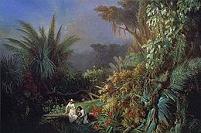
In 1788 after becoming a fan of "Robinson Crusoe" in childhood, Le Havre-born French botanist Jacques-Henri Bernardin de Saint-Pierre (1737-1814) pub. Paul and Virginia (Paul et Virginie), about young friends-since-birth lovers on Mauritius who live harmoniously with Nature on the eve of the French Rev., becoming a popular children's novel; "She had read Paul et Virginie, and she had fantasized about the little bamboo cottage, the Negro Domingo, the dog Fidèle, but even more the sweet friendship of some good little brother who would go and gather ripe fruits for you from great trees taller than spires, or who would run barefoot in the sand, bringing you a bird's nest." (Gustave Flaubert, "Emma Bovary", 1856)

In June 1802 Sarah Trimmer (1741-1810) begins pub. The Guardian of Education (until Sept. 1806), becoming the first successful periodical dedicated to r eviewing children's lit. in Britain.



In 1812 Hanau, Hesse-Kassel, Germany-born brothers Jacob Ludwig Carl Grimm (1785-1863) and Wilhelm Carl Grimm (1786-1859) pub. Grimm's Fairy Tales (Children's and Household Tales) (2 vols.) (1812, 1815) (86 stories, 70 stories); 2nd. ed in 1819 and 1822 (170 stories); 7th ed. in 1857 (211 stories); originally for adults, they are watered-down for children in an 1825 "small edition" of 50 stories, which goes through 10 eds. by 1858.

In 1812 Berne-born Swiss author Johann David Wyss (1743-1818) pub. The Swiss Family Robinson, an internat. bestseller inspired by Daniel Defoe's "Robinson Crusoe" (1719), about a Swiss family who get shipwrecked in the East Indies en route to Port Jackson, Australia, written as an educational book for children about family values, Christians morals, nature, and husbandry; makes a fan of Jules Verne, even though the flora and fauna on the small island are geographically impossible?; ed. by Johann Rudolf Wyss, author of the Swiss nat. anthem; illustrations by Johann Emmanuel Wyss; English trans. pub. in 1814.

In 1834 retired British navy capt. Frederick Marryat (1792-1848) pub. Peter Simple, about a young British midshipman during the Napoleonic Wars. In 1836 he pub. the autobio. novel Mr. Midshipman Easy. In 1847 he pub. The Children of the New Forest, a children's novel about the four Beverly orphans, who hide from the Roundheads.

On May 8, 1835 Odense, Denmark-born poet-playwright-novelist Hans Christian Andersen (1805-75) pub. Fairy Tales Told for Children, the first four of his 168 dark children's stories, making up such great stuff as the Ugly Duckling, the Princess and the Pea (20 mattresses and 20 featherbeds), the Emperor's New Clothes, and the Little Mermaid (Die Kleine Seejungfrau) (who dissolves into sea foam but is transformed into a daughter of the air), which sound like they're based on old folk tales but aren't?

In 1802 Bristol-born writer-scholar-historian-biographer and Romantic poet Robert Southey (1774-1843) pub. The Inchcape Rock, about 14th cent. Abbot Aberbrothock of Arbroath, who installs a warning bell on a dangerous sandstone reef 11 mi. off the E coast of Scotland, only to have it stolen by a pirate, who later is killed on the reef in bad weather. In 1820 he pub. What Are Little Boys Made Of?; "What are little boys made of?/ Snips and snails/ And puppy-dogs' tails"; "What are little girls made of?/ Sugar and spice and all things nice." In 1834-47 he anon. pub. The Doctor (7 vols.), which incl. Goldilocks and the Three Bears (1837); in 1837 George Nicol turns it into a poem; in 1849 Joseph Cundall changes the old woman to a pretty little girl.

In 1853 Dartmoor, Devonshire-born Anglican Rev. Charles Kingsley (1819-75) pub. Hypatia: Or, New Foes with an Old Face; the pagan brain babe who was murdered by a mob of monks in 415 C.E., only this time she converts to Christianity right before being murdered, gag? In 1854 he pub. Westward Ho!: Or, The Voyages and Adventure of Sir Amyas Leigh, Knight; unruly child Amyas Leigh of Bideford Quay in North Devon follows Sir Francis Drake to sea and falls for beautiful Rose Salterne, who is kidnapped by a Spaniard and burned alive; the town of you know what near Bideford, Devon is later named after it, becoming the only English town with an exclamation point in its name; "And clapping both hands to the back of his neck, the schoolmaster began dancing frantically about, while his boys broke out tittering, "Oh! the ochidore.'" In 1857 he pub. Two Years Ago (2 vols.); a review by Rev. T.C. Sandars popularizes the term "Muscular Christianity", which Kingsley calls "painful, if not offensive". In 1863 he pub. The Water Babies: A Fairy Tale for a Land Baby, a children's book supporting Charles Darwin's "The Origin of Species", becoming a big hit in England for decades, after which its prejudices against Irish, Jews, Americans, and the poor cause it to fall out of favor; young chimney sweep Tom and upper class girl Ellie, who drowns and is transformed into a you know what. In 1865 he pub. Hereward the Wake: Last of the English, 18-y.-o. Hereward of Mercia, son of Earl Leofric and Lady Godiva, the last Anglo-Saxon holdout against the Normans, who kills 15 of them at a drunken feast with help from his buddy Martin Lightfoot, then turns rebel, holding up with his gang at Ely in the Fens, repelling William I the Conqueror until he is betrayed by Countess Alftruda and swears fealty to him to save his babe Torfrida, after which he is assassinated by Ivo Taillebois; makes Hereward into an English folk hero.

In 1863 Bury St. Edmonds-born Ouida (Marie Louise de la Ramee) (1839-1908) (Ouida is her childhood pronunciation of "Louisa") pub. Held in Bondage. In 1865 she pub. Strathmore; Or, Wrought by His Own Hand. In 1869 she pub. Tricotrin: The Story of a Waif and Stray. In 1875 she pub. Signa; a poor Italian rises to famous opera composer; Jack London's inspiration. In 1880 she pub. Moths. In 1881 she pub. A Village Commune. In 1882 she pub. Bimbi: Stories for Children.







In 1865 Daresbury, Cheshire-born Lewis Carroll (Charles Lutwidge Dodgson) (1832-98) pub. Alice's Adventures in Wonderland (original title "Alice's Adventures Underground"); based on a story he first told to Alice Pleasance Liddell (1852-1934), 2nd daughter of Greek scholar Henry George Liddell (1811-98), dean of Christ Church (1855-91) on July 4 in a row boat on The Isis from Folly Bridge, Oxford to Godstow for a picnic, rowed by Rev. Robinson Duckworth (1834-1911); illustrations by Sir John Tenniel (1820-1914), who was introduced by mutual friend, "Our American Cousin" playwright Tom Taylor (1817-80); "I'm late for a very important date" (White Rabbit); the Mad Hatter is claimed to really be PM William Gladstone; too bad, Carroll is later found to have been dabbling in a little soft child porn? (healthy outdoor nature photos?). In Dec. 1871 he pub. Through the Looking-Glass and What Alice Found There; Alice steps through a parlor mirror and enters the Looking-Glass House, meeting Humpty-Dumpty, Tweedledum, and Tweedledee, and becoming a piece in a chess game; the Red Queen loves to shout "Off with their heads!"; the White Queen lives in backwards time; "Queens never make bargains"; incl. the poems The Walrus and the Carpenter, and Jabberwocky. In 1876 he pub. The Hunting of the Snark (An Angony in 8 Fits). In 1889 he pub. Sylvie and Bruno. In 1893 he pub. Sylvie and Bruno Concluded. "Who in the world am I? Ah, that's the great puzzle."

In 1865 New York City-born children's writer Mary Elizabeth Mapes Dodge (1831-1905) pub. Hans Brinker, or The Silver Skates, about Hans and Gretel in a Dutch village; Gretel wins a skating contest, and their daddy is treated by a famous doctor. In 1883 she pub. Donald and Dorothy. In 1894 she pub. The Land of Pluck: Stories and Sketches for Young Folk.

In 1868-9 after publishing several potboiler novels under the alias A.M. Barnard, Germantown, Penn.-born Louisa May Alcott (1832-88) ("The novelist of children... the Thackeray, the Trollope, of the nursery and the schoolroom" - Henry James) pub. Little Women; or Meg, Jo, Beth and Amy (Good Wives) (2 vols.), which becomes a big hit, spawning sequels "Little Men" (1871), about Jo and her hubby Prof. Friedrich Bhaer at Plumfield School, and "Jo's Boys" (1886); mother Marmee (wife of Col. March) and the four March sisters (the first "All-American girls"?) growing up in Transcendentalist Concord, Mass. during the U.S. Civil War, incl. unconventional tomboy "topsy-turvy" Jo (who becomes a novelist), fragile Beth (who gets scarlet fever), mischievous Amy (the youngest, who grows up into a sedate young artist), and domestically inclined Meg; based on her own Orchard House; "It's so dreadful to be poor" (Meg); filmed in 1917, 1918, 1933 by George Cukor, 1949 by Mervyn LeRoy, 1978 by Gordon Hessler, and 1994 by Gillian Armstrong. In 1878 she pub. Under the Lilacs, a children's novel about Bab, Betty, circus runaway Ben Brown, his dog Sancho, neighbor Miss Celia and her brother Thornton.
In Nov. 1873 the monthly children's St. Nicholas Mag. is founded by Scribner's (until 1943), with Mary Mapes Dodge as ed. #1 (until 1905), going on to feature top writers incl. Louisa May Alcott, Frances Hodgson Burnett, Joel Chandler Harris, and Mark Twain; the St. Nicholas League is founded to award the best work submitted by juvenile readers, with winners incl. Stephen Vincent Benet, Rachel Carson, William Faulkner, F. Scott Fitzgerald, Edna St. Vincent Millay, and E.B. White; future conservationist Marjory Stoneman Douglas pub. the story "An Early Morning Paddle", which is awarded a prize by the Boston Herald.
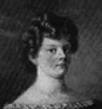
In 1877 Great Yarmouth, Norfolk-born Anna Sewell (1820-78) pub. her first (only) novel Black Beauty: The Autobiography of a Horse; AKA Darkie and Old Crony, a worldwide bestseller (50M copies); a horse starts out as a riding and carriage horse, ends up as a mistreated town cab horse, and finds happiness in a secure home, keeping its good temper; written by invalid Sewell "to induce kindness, empathy and an understanding treatment of horses"; sold to Jarrolds for 20 pounds, and pub. 3 mo. before her death, after which it becomes the #6 bestseller in the English language; filmed in 1917 by Edward H. Griffith as "Your Obedient Servant", in 1924 by Edward H. Griffith, in 1946 by Max Nosseck, in 1971 by James Hill, and in 1994 by Caroline Thompson; "There is no religion without love, and people may talk as much as they like about their religion, but if it does not teach them to be good and kind to man and beast, it is all a sham." (Ch. 13)

In 1881 Eatonton, Ga.-born Atlanta Constitution associate ed. Joel Chandler Harris (1848-1908) pub. Uncle Remus: His Songs and His Sayings: The Folk-Lore of the Old Plantation, authentic African-Am. folk tales by the ed. of the Atlanta Constitution, based on stories told him by Uncle George Terrell, Old Harbert, and Aunt Crissy; Br'er Fox builds a Tar-Baby, and Br'er Rabbit punches it and gets stuck; Br'er Bear; Br'er Rabbit begs Br'er Fox to hang, drown, or skin him, but not fling him into a briar patch; filmed by Disney in 1946 as "Song of the South" starring James Baskett; followed by six sequels, incl. Uncle Remus: His Songs and Sayings (1880), Nights with Uncle Remus (1883), Uncle Remus and His Friends (1892), Uncle Remus and Br'er Rabbit (1906). After he dies on July 3, 1908 in Atlanta, Ga. his ocher-colored Queen Anne home Wren's Nest in Atlanta, Ga. is left to the Joel Chandler Harris Assoc., with its bylaws stipulating that it must be run by "100 white ladies", who turn it into a museum in 1913, which bars blacks from entry; in 1967 black Rev. Clyde Williams sues, a federal judge orders it integrated in 1968, and the bylaws are changed in 1973.

In 1881 Hirzel-born Swiss writer Johanna Spyri (nee Johanna Louise Heusser) (1827-1901) pub. Heidi: For Children and Those Who Love Children (2 vols.); incl. "Heidi's Years of Learning and Travel", "Heidi Makes Use of What She Learned"; Adelheid "Heidi" loses her parents Tobias and Adelheid, and is brought up by Aunt Dete in Mayenfeld, Switzerland, who takes him to the house of her paternal grandfather Alp-Ohi (Alm-Uncle), who lives like a hermit in Graubunden on alms, winning him over; three years later Dete takes Heidi to Frankfurt to be a companion to invalid wealthy girl Klara Sesemann, suffering under strict housekeeper Fraulein Rottenmeier, and grows so homesick that she turns into a pale sleepwalking ghost, causing the doctor to order her sent back to her grandfather, whom she tames and gets to attend church, after which Klara visits Heidi, and after jealous Peter the goatherd crashes her wheelchair, Heidi gets her to walk, causing the grateful Sesemann family to adopt her; filmed in 1937 starring Shirley Temple; "The pretty little Swiss town of Mayenfeld lies at the foot of a mountain range" (first line).

In 1881 Hobart, Tasmania-born Mrs. Mary Augusta Humphry Ward (1851-1920) pub. the children's book Milly and Olly. In 1884 she pub. her first novel Miss Bretherton. In 1888 she pub. Robert Elsmere, a novel of religious doubt attacking evangelical Christianity; its internat. sales are the first to exceed Harriet Beecher Stowe's 1852 "Uncle Tom's Cabin". In 1892 she pub. The History of David Grieve. In 1894 she pub. Marcella. In 1896 she pub. Sir George Tressady. In 1898 she pub. Helbeck of Bannisdale. In 1900 she pub. Eleanor. In 1903 she pub. Lady Rose's Daughter; bestseller. In 1905 she pub. The Marriage of William Ashe; bestseller. In 1906 she pub. Fenwick's Career. In 1908 she pub. The Testing of Diana Mallory. In 1909 she pub. Daphne, or Mariage a la Mode. In 1910 she pub. Canadian Born. In 1911 she pub. The Case of Richard Meynell. In 1913 she pub. The Mating of Lydia; also The Coryston Family. In 1914 she pub. Delia Blanchflower. In 1915 she pub. Eltham House. In 1916 she pub. A Great Success; also Lady Connie. In 1917 she pub. Missing. In 1918 she pub. The War and Elizabeth (Elizabeth's Campaign). In 1919 she pub. Cousin Philip. In 1920 she pub. Harvest.

In 1883 after starting the first free kindergarten in San Francisco, Calif. in 1878 and needing money to support it, Philly-born Kate Douglas Wiggin (nee Smith) (1856-1923) pub. her first novel The Story of Patsy, followed by The Birds' Christmas Carol (1887), about 10-y.-o. Carol Bird, who is about to die of TB and plans a Christmas celebration for her poor neighbors the Birds, with nine children; in 1889 Houghton Mifflin repub. both books, becoming bestsellers, launching her writing career. In 1903 she pub. Rebecca of Sunnybrook Farm, about Rebecca Rowena Randall, who goes to live with her two stern aunts in Riverboro, Maine; filmed in 1917, 1932, and 1938.

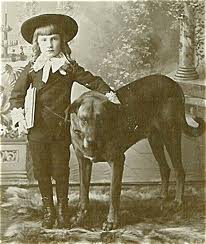
In 1886 Cheetham Hill, Manchester, England-born Am. writer Frances Eliza Hodgson Burnett (1849-1924) pub. her first children's book Little Lord Fauntleroy, which becomes a big hit, becoming the Harry Potter of the 19th cent.; 7-y.-o. New Yorker Cedric Errol lives in genteel poverty with Mrs. Errol (Dearest) after the death of English father Capt. Cedric Errol, dressing in black velvet and lace collar with curls until he is given the news by lawyer Haversham that he has inherited the English title of Lord Fauntleroy, but must live with his sour-puss grandfather the Earl of Dorincourt and be brought up as an Englishman, only he hates the mother and snubs her; too bad, a pretender arrives, along with his evil mother, causing Dick Tipton the Bootblack and Mr. Hobbs the Grocer to play detective and expose her, after which he accepts Cedric and Dearest and they live happily together; the illustrations by Reginald Birch cause mothers to begin dressing their unhappy tykes in velvet Little Lord Fauntleroy suits.; filmed in 1914, in 1921 starring Mary Pickford, and in 1980 starring Rick Schroder. In 1905 she pub. A Little Princess: Being the Whole Story of Sara Crew Now Being Told for the First Time; 7-y.-o. India-born Sara Crew is taken by her wealthy father Capt. Crewe to Miss Minchin's Boarding School for Girls in London, leaving her with an elegant wardrobe and the doll Emily, making headmistress Miss Minchin jealous, which she hides until Capt. Crewe dies penniless of jungle fever four years later, causing Miss Minchin to seize her belongings and make her into a beggar-servant who has to live in the attic and endure abuse, while being consoled by friends Ermengarde, Lottie, and Becky, until a baker adopts her, after which Capt. Crewe's partner Tom Carrisford arrives looking for her after their diamond mine strikes it rich, and she is discovered by his servant Ram Dass and his pet monkey. In 1911 she pub. The Secret Garden; 10-y.-o. Mary Lennox is born in India to uncaring wealthy British parents, who have her brought up by servants until they die of cholera, causing her to be sent to Yorkshire to be brought up by her uncle Archibald Craven, where she discovers a secret locked walled you know what; Martha Sowerby the maid, Ben Weatherstaff the gardener, friendly Robin Redbreast; her cousin Colin, who she finds locked in a hidden bedroom because he has a spinal problem, causing her to nurse him until he can walk, after which they surprise Mr. Craven when he returns to the manor; filmed in 1919 starring Lila Lee, in 1949 starring Margaret O'Brien, and in 1993 starring Kate Maberly; "What was this under her hands which was square and made of iron and which her finger found a hole in? It was the lock of the door which had been closed ten years and she put her hand in her pocket, drew out the key and found it fitted the keyhole. She put the key in and turned it. It took two hands to turn it, but it did turn. And then she took a long breath and looked behind her up the long walk to see if anyone was coming. No one was coming. No one ever did it seemed, and she took another long breath, because she could not help it, and she held back the swinging curtain of ivy and pushed back the door that opened slowly - slowly. Then she slipped through it, and shut it behind her, and stood with her back against it, looking about her and breathing quite fast with excitement, and wonder, and delight. She was standing inside the secret garden."

In 1891 Boston, Mass.-born Laura Elizabeth Howe Richards (1850-1943), daughter of "Battle Hymn of the Republic" composer Julia Ward Howe pub. Captain January, about a lighthouse keeper and his little girl Star; filmed in 1924 starring Baby Peggy, and in 1936 starring Shirley Temple. In 1932 she pub. Tirra Lirra: Rhymes Old and New.
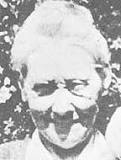

In Oct. 1899 Edinburgh, Scotland-born Helen Bannerman (Helen Brodie Cowan Watson) (1862-1946) pub. her first book The Story of Little Black Sambo, about Tamil children in SE India, where she lives with her husband; Sambo, son of Black Jumbo and Black Mumbo outwits hungry tigers by giving them his new red coat, blue trousers, purple shoes, and umbrella and letting them chase each other around a tree until they turn into ghee, then recovers his things and runs home, eating 169 pancakes for supper made by Black Mumbo from the ghee; the book becomes a hit with children and is widely pirated; too bad, the word "sambo" becomes a racial slur, and in 1932 Langston Hughes calls it a typical "pickaninny" storybook that harms black children, causing the book to be increasingly banned until extensive revisions rescue it; she follows with "The Story of Little Black Mingo" (1901), "The Story of Little Black Quibba" (1902), "Little Black Quasha" (1908), "The Story of Little Black Bobtail" (1909), and "Sambo and the Twins" (1936); in 1965 her daughter Day (1896-) pub. "Little White Squibba", a rewrite with a white girl as heroine.


In 1899 Elizabeth, N.J.-born Edward L. Stratemeyer (1862-1930) launches The Rover Boys children's series under the alias Arthur M. Winfield (ends 1926), about Tom, Sam, and Dick Rover; in 1904 he launches The Bobbsey Twins series under the alias Laura Lee Hope, reaching 72 books in 1979, plus another 30 in 1987-92, about the upper middle-class Bobbsey family incl. 12-y.-o. fraternal twins Bert and Nan and 6-y.-o. fraternal twins Flossie and Freddie; in 1906 he founds the Stratemeyer Syndicate, which pioneers mass production of fiction with freelance writers and support staff; in 1910 he launches the Tom Swift sci-fi adventure series under the alias Victor Appleton, about inventor Tom Swift; in 1912 he launches the Baseball Joe series under the alias Lester Chadwick (really Howard R. Garis), about baseball player Joe Matson, who rises from h.s. to Yale U. to the pros; in 1927 he launches the Hardy Boys series under the alias Franklin W. Dixon, about amateur detectives Frank and Joe Hardy; in 1930 he launches the Nancy Drew series under the alias Carolyn Keene, about a 16-y.-o. amateur detective; in 1934 he launches The Dana Girls series under the alias Carolyn Keene about teenie sisters Jean and Louise Dana, who play amateur detective at a boarding school; he goes on to publish the series Jack Ranger, Don Sturdy, The Colonial Series, Happy Hollisters, Honey Bunch, Curly Tops, Bunny Brown, Motor Boys, Bomba the Jungle Boy et al.; his daughter Harriet Stratemeyer Adams (1892-1982) carries on after his death with Nancy Drew under the alias Carolyn Keene. He dies on May 10, 1930 in Newark, N.J. after pub. 1.3K titles which sold 500M copies; "As oil had its Rockefeller, literature had its Stratemeyer." (Fortune mag.)

In 1902 South Kensington, London-born English children's novelist-illustrator Helen Beatrix Potter (1866-1943) pub. The Tale of Peter Rabbit, a bestseller (45M copies); Peter loses his jacket and shoes to Farmer McGregor while his siblings Flopsy, Mopsy, and Cottontail stay safely at home; he escapes and returns home to his mother, who puts him to bed and gives him camomile tea. In 1904 she follows with The Tale of Benjamin Bunny; Peter returns to Mr. McGregor's garden with his cousin Benjamin to retrieve his lost duds. In 1905 she uses the royalties to buy Hill Top Farm in Near Sawrey, Lancashire near Windermere in the English Lake District, becoming a prize-winning breeder of Herdwick sheep, making big bucks marketing spinoff merchandise.
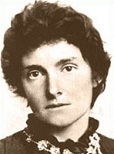
In 1906 Kensington, London, England-born Edith (E.) Nesbit (nee Bland) (1858-1924) pub. The Railway Children; after the father is falsely imprisoned for spying, the Waterbury family of a mother and three children are forced to move from a mansion to a modest house called The Three Chimneys in Yorkshire near the railway, befriending the Old Gentleman, who takes the 9:15 a.m. train each day, and helps prove his innocence; meanwhile the family helps Russian exile Mr. Szczepansky and Jim, the Old Gentleman's grandson; filmed in 1970; she goes on to pub. 40 children's books.

In 1906-7 Marbacka, Varmland, Sweden-born Selma Ottilia Lovisa Lagerlof (Lagerlöf) (1858-1940) pub. The Wonderful Adventures of Nils (2 vols.), about young Nils Holgersson, whose "chief delight was to eat and sleep, and after that he liked best to make mischief", who nets a tomte (tiny white-bearded gnome with a red knit cap) who turns him into one. She receives the 1909 Nobel Lit. Prize, becoming the first woman.

In 1908 Clifton, Prince Edward Island, Canada-born writer Lucy Maud Montgomery (1874-1942) pub. her first novel Anne of Green Gables, which becomes an internat. bestseller (50M copies), about 12-y.-o. hard-luck orphan Anne Shirley of Nova Scotia is adopted by elderly Matthew and Marilla Cuthbert of Avonlea in beautiful Prince Edward Island, except they ordered a boy and find out too late; filmed in 1919 starring Mary Miles Minter, in 1934 starring Dawn O'Day, who changes her screen name to Anne Shirley; followed by seven sequels (1909-21) showing her growing up, then focusing on her children and family friends.
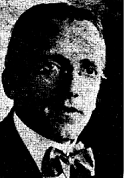
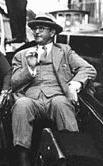
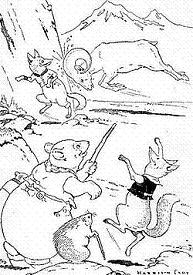
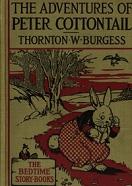
In 1910 Sandwich, Mass.-born nature-loving children's writer ("the Bedtime Story Man") Thornton Waldo Burgess (1874-1965) of Springfield, Mass. pub. his first book Old Mother West Wind, illustrated by Gardner, Mass.-born Walter Harrison Cady (1877-1970); first in a series; introduces Old Mother West Wind and her Merry Little Breezes, Peter Rabbit, Jimmy Skunk, Sammy Jay, Bobby Raccoon, Little Joe Otter, Grandfather Frog, Billy Mink, Jerry Muskrat, and Spotty the Turtle. In 1914 he pub. The Adventures of Peter Cottontail (illustrations by Harrison Cady), in which Peter Rabbit changes his name in chapter 2 to sound more important then restores it in chapter 3 because "There's nothing like the old name after all"; when he finds out that British writer-illustrator Beatrix Potter named her characters Peter Rabbit and Cottontail, he writes the soundbyte: "I like to think that Miss Potter gave Peter a name known the world over, while I with Mr. Cady's help perhaps made him a character." Burgess goes on to pub. 15K+ syndicated stories about Peter Rabbit plus 170+ books; Cady draws the syndicated Peter Rabbit comic strip in 1920-48. In 1949 Steve Nelson and Jack Rollins compose the song Here Comes Peter Cottontail, which Gene Autry releases on the Columbia label, reaching #3 on the U.S. country charts and #5 on the U.S. Billboard pop charts, becoming the unofficial name of the Easter Bunny.

In 1910 Ledbury, Herefordshire-born poet-novelist-playwright-writer John Edward Masefield (1878-1967) pub. his first children's novel A Book of Discoveries. In 1927 he pub. The Midnight Folk, about young Kay Harker, who sets out to discover what became of a fortune stolen from his seafaring great-grandfather Aston Tirrold Harker before a coven of witches led by governess Sylvia Daisy Pouncer can get it, and is assisted by talking anaimals incl. Nibbins the Cat, who fights bad cats Blackmalkin and Greymalkin. In 1935 he pub. the sequel The Box of Delights. In 1930-67 he becomes British poet laureate.

In 1913 Littleton, N.H.-born Eleanor Emily Hodgman Porter (1868-1920) pub. Pollyanna, about an ever-cheerful orphan growing up with her town boss Aunt Polly in Harrington; first in a series incl. "Pollyanna Grows Up" (1915); filmed in 1920 starring Mary Pickford, and in 1960 by Disney starring Hayley Mills; followed by Pollyanna Grows Up (1915), plus 11 more sequels called Glad Books by Elizabeth Borton or Harriet Lummis Smith; spawns the Pollyanna Principle (Effect) of Margaret W. Matlin and David J. Stang in 1978, that people tend to agree with positive statements about themselves.

In 1916 after taking up children's writing, County Longford, Ireland-born playwright-novelist Padraic Colum (Collumb) (1881-1972) pub. The King of Ireland's Son, a children's novel based on Irish folklore, about the King of Ireland's eldest son, who woos Fedelma, the Enchanter's Daughter only to see her kidnapped by the King of the Land of Mist. In 1918 he pub. The Children's Homer; also Adventures of Odysseus and the Tale of Troy. In 1920 he pub. The Boy Apprenticed to an Enchanter, and The Children of Odin. In 1923 he pub. Castle Conquer. In 1933 he pub. The Big Tree of Bunlahy: Stories of My Own Countryside (Newbery Medal); illustrated by Jack Yeats.

In 1920 Maidenhead, Berkshire-born English writer Hugh John Lofting (1886-1947) pub. The Story of Doctor Dolittle, Being the History of His Peculiar Life at Home and Astonishing Adventures in Foreign Parts (Lewis Carroll Shelf Award), about Victorian English physician John Dolittle, MD ca. 1820, who lives in Puddleby-on-the-Marsh in the West Country, and keeps a menagerie that scares off his clients until his parrot Polynesia teaches him to talk with the animals and he becomes a veterinarian, going on an adventure to W Africa, meeting up with a 2-headed pushmi-pullyu (gazelle-unicorn cross) which he brings back to England to exhibit for profit; Gub-Gub the Pig, Jip the Dog, Dab-Dab the Duck, Chee-Chee the Monkey, Too-Too the Owl, Whitey the White Mouse; too bad, the PC police later get it censored for his depiction of black Africans, incl. Prince Bump, who wishes he were white so he can marry Sleeping Beauty, causing the doctor to bleach him, his skin giving off the smell of "burning brown paper", after which "The Prince's face had turned as white as snow, and his eyes, which had been mud-colored, were a manly gray!" Followed by The Voyages of Doctor. Dolittle (1922) (Newbery Medal) (set in 1839), Doctor Dolittle's Post Office (1923), and eight more sequels (1924-42), plus three more pub. posth. in 1948-52, plus Gub Gub's Book: An Encyclopaedia of Food (1932).
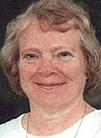
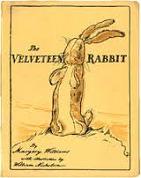
In 1922 after her adult novels "The Late Returning", "The Thing in the Woods" et al. bomb, London, England-born Am. writer Margery Winifred Williams (1881-1944) pub. The Velveteen Rabbit or How Toys Become Real; illustrated by Sir William Nicholson (1872-1949); "He was fat and bunchy, as a rabbit should be; his coat was spotted brown and white, he had real thread whiskers, and his ears were lined with pink sateen"; loved to a nub, tossed out with the trash, and saved by a magic fairy, who turns him "into Real" to live in the forest with the other rabbits; "Generally, by the time you are Real, most of your hair has been loved off, and your eyes drop out and you get loose in the joints and very shabby. But these things don't matter at all, because once you are Real you can't be ugly, except to people who don't understand." She follows with Poor Cecco: The Wonderful Story of a Wonderful Wooden Dog Who Was the Jolliest Toy in the House Until He Went Out to Explore the World (1925), about wooden dog Cecco, who leaves his toy box along with rag puppy Bulka, Harlequin, Easter Chicken, Money-Pig, and wooden doll Jensina, battling ducks and rats and wicked black cat Murrum, befriending woodchucks, and dancing at a country fiddling party; illustrated by Arthur Rackham.
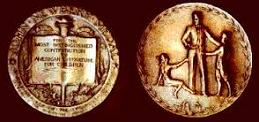
In 1922 the first John Newbery Medal is awarded by the Assoc. for Library Service to Children, a div. of the Am. Library Assoc. for "the most distinguished contribution to American literature for children" to Hendrik Willem van Loon for The Story of Mankind.

In 1925 children's writer Elinor M. Brent-Dyer (nee Gladys Eleanor May Dyer) (1894-1969) pub. The School at the Chalet; first in the Chalet School series (#58 in 1970); big hit with English schoolgirls.

In 1926 Kilburn, London-born English novelist-playwright A.A. (Alan Alexander) Milne (1882-1956) pub. King Hilary and the Beggerman; also Portrait of a Gentleman in Slippers: A Fairy Tale (Liverpool); also Winnie-the-Pooh (Oct. 14) (London); original name Edward Bear; set in the Hundred Acre Wood, based on 500-acre Ashdown Forest in East Sussex; friends incl. Piglet, Eeyore (whose tail Christopher Robin reattached with a nail), Owl, Rabbit, Kanga and her son Roo; written for his son Christopher Robin Milne (1920-96); the book's success causes the name "Christopher" (Gr. "bearer or carrier of Christ") to become popular by the 1940s; "What's for breakfast?"; "'We'll be Friends Forever, won't we, Pooh?' asked Piglet. 'Even longer', Pooh answered"; "PLES RING IF AN RNSER IS REQUIRD" (Owl's tree-house door). In 1928 he pub. The House at Pooh Corner (London), which introduces Tigger.
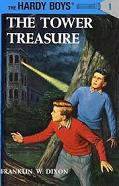
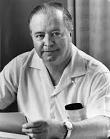
In 1927 The Hardy Boys children's series begins pub. (ends ?), written by a number of different authors using the same alias Franklin W. Dixon, starting with Ont., Canada-born Charles Leslie McFarlane (1902-77), who works for $85 a pop; about teenie brothers Frank (older) (dark hair) (thinker) and Joe (blonde) (impulsive, athletic) of Bayport on Barmet Bay, who are amateur detectives; their father is detective Fenton Hardy, whose cases they sometimes work on; the mother is Laura Hardy; their friends incl. Chet Morton, Phil Cohen, Biff Hooper, Jerry Gilroy, and Tony Prito; their platonic girlfriends are Callie Shaw and Iola Morton; "Never were so many assorted felonies committed in a simple American small town. Murder, drug peddling, race horse kidnapping, diamond smuggling, medical malpractice, big-time auto theft, even (in the 1940s) the hijacking of strategic materials and espionage, all were conducted with Bayport as a nucleus." (Arthur Prager)




In 1930 Ladora, Iowa-born Carolyn Keene (Mildred Augustine Wirt Benson) (1905-2002) pub. The Secret of the Old Clock, the first novel in the ever-popular Nancy Drew series; first 26 illustrated by Russell H. Tandy; starts out with blonde hair, cloche hat, skirt suit, and heels; by the late 1950s her hair becomes "titian"; 55 sequels through 1979, then Grosset & Dunlap sells out to Simon & Schuster, and another 119 are pub. by 2007; the series shows her changing fashion styles in jumps, incl. the young prof. look in the 1940s, the June Cleaver look with neckties in the 1950s, jeans in 1956, yellow dress and bag and painted fingernails in 1961, red flip hair in the 1970s, the polo-shorts tomboy look in the 1980s with occasional frilly Gunne Sax outfit, crop tops and bouncy blond hair in the 1990s, plaids, penny loafers, and headbands in the 2007 film; pub. by Harriet Stratemeyer Adams (1892-1982), who also writes for this series and also the Hardy Boys, revising them in the 1950s-60s to remove stereotypes and bring them up to date.
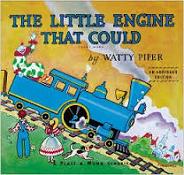
In 1930 Hungarian-born Arnold Munk (-1957) of Platt & Munk of New York City pub. The Little Engine That Could, under the alias Watty Piper, based on the 1910 story "The Pony Engine" by Mary C. Jacobs, about a small engine who has to pull a long train over a mountain, uttering the soundbyte "I think I can"; becomes a giant children's hit.
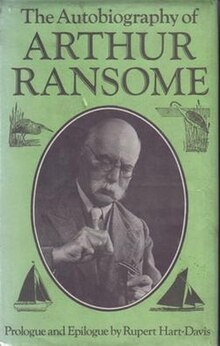
In 1930 Leeds, England-born writer Arthur Michell Ransome (1884-1967), known for pub. works about the 1917 Russian Rev., causing him to be suspected by MI5 of being a Soviet Spy pub. the children's novel Swallows and Amazons, first in a 13-book series (ends 1967) about England's Lake District and the Norfolk Broads, spawning a tourist industry around Lake Windermere and Coniston Water.

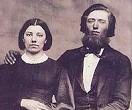

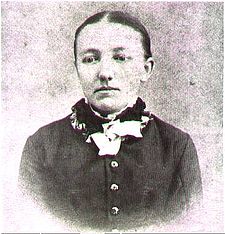

In 1930 Pepin, Wisc.-born Laura Elizabeth Ingalls Wilder (1867-1957) pub. Little House in the Big Woods, first in a series about her picturesque life in the Big Woods of Wisc., Injun territory in Kan., and Walnut Grove, Minn. with parents Charles Philip Ingalls (1836-1902) and Caroline Lake Quiner Ingalls (1839-1924), and sisters Mary Amelia Ingalls (1865-1928) (who goes blind), Caroline Celestia "Carrie" Ingalls Swanzey (1870-1946), and Grace Pearl Ingalls Dow (1877-1941); sells 41M copies in the U.S., plus versions in 40 languages, causing her to crank out seven sequels by 1943, and an 8th pub. posth. in 1971; the Michael Landon TV series debuts in 1974. In 1935 she pub. Little House on the Prairie. In 1937 she pub. On the Banks of Plum Creek. In 1940 she pub. The Long Winter. In 1941 she pub. Little Town on the Prairie. In 1943 she pub. These Happy Golden Years. In 1954 the Am. Library Assoc. establishes the Laura Ingalls Wilder lifetime achievement award for children's writers, awarding her the first one; too bad, after leftists take over the ALA, on June 25, 2018 they remove Wilder's name from their legacy award for being too white, er, "expressions of stereotypical attitudes inconsistent with ALSC's core values", renaming it the Children's Lit. Legacy Award.


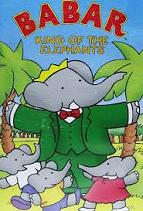
In 1931 Paris-born French writer-illustrator Jean de Brunhoff (1899-1937) pub. Babar the Elephant (Histoire de Babar: Le Petit Elephant); English trans. by A.A. Milne "The Story of Babar" pub. in 1933; invented by Jean's wife Cecile for her children; a young elephant sees his mother killed by a hunter and escapes to the big city, taking to wearing a green English suit before returning to bring the benefits of civilization to his fellow elephants, getting appointed king and marrying his cousin Queen Celeste; followed by six sequels by 1937, after which his Paris-born son Laurent de Brunhoff (1925-) carries on with 45+ more sequels starting in 1946 with "Babar's Cousin: That Rascal Arthur".

In 1934 Maryborough, Queensland, Australia-born Pamela Lyndon "P.L." Travers (nee Helen Lyndon Goff) (1899-1996) pub. Mary Poppins in London, becoming the first of a series of eight pub. by 1988; in 1964 the Disney version debuts, starring Julie Andrews and Dick Van Dyke.
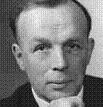
In 1934 after his historian grandfather teaches him to create historically-correct backgrounds, Nottingham-born English children's historical novelist (Robert) Geoffrey Trease (1909-98) pub. his first novel Bows Against the Barons, based on the legend of Robin Hood, followed by 112 more books, mainly for children, which get translated into 20 languages. In 1940 he pub. Cue for Treason, which becomes his biggest hit, about runaway boy actors Peter Brownrigg and Kit Kirkstone, who befriend William Shakespeare then foil a plot by Sir Philip Morton against Queen Elizabeth I. In 1948 he pub. Tales Out of School, which claims that children's lit. should be a subject for serious study and debate.

In 1936 Hamilton, Md.-born Wilbur Munro Leaf (1905-76) pub. The Story of Ferdinand; illustrated by Robert Lawson (1892-1957); a children's story written in less than an hour about a gentle bull in Spain who prefers smelling flowers to bullfighting, pissing-off the Nazis and Spanish Fascists, who ban it, making it an internat. pacifist hit.

In 1937 Tirol, Austria-born children's writer Ludwig Bemelmans (1898-1962) pub. My War with the United States; also By the Waters of Babylon. In 1938 he pub. Life Class; based on his 10 years working in the Ritz-Carlton Hotel in New York City, working up from busboy to asst mgr. In 1939 he pub. Hotel Splendide; also Madeline; "In an old house in Paris, that was covered with vines, lived twelve little girls in two straight lines... the smallest one was Madeline"; Miss Clavel the nun, next door neighbor Pepito, son of the Spanish ambassador, Lord "Cucuface" Covington, owner of the house, the dog Genevieve. In 1940 he pub. Small Beer. In 1942 he pub. Rosebud. In 1944 he pub. Dirty Eddie. In 1946 he pub. Now I Lay Me Down to Sleep. In 1950 he pub. Sunshine; grumpy old landlord Mr. Sunshine. In 1952 he pub. How to Travel Incognito. In 1953 he pub. Father, Dear Father.


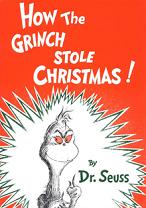
In 1937 Springfield, Mass.-born writer-poet-cartoonist Theodor "Ted" Seuss ("Dr. Seuss") Geisel (1904-91) (AKA Theophrastus Seuss, Theo LeSieg, Rosetta Stone) (raised near Mulberry St. and educated at Dartmouth College, and Lincoln College, Oxford U.) pub. his first children's novel And to Think That I Saw It on Mulberry Street, which was rejected by 23 publishers before an old college friend from Vanguard Press was bumped into on Madison Ave. in New York City? He follows with The 500 Hats of Bartholomew Cubbins (1938) (Vanguard Press), written in prose; King Derwin of Didd passes you know who, who removes his hat only to see another more beautiful one appear; his 500th hat finally stays off; followed by sequel "Bartholomew and the Oobleck" (1949). In 1939 he pub. The Seven Lady Godivas: The True Facts Concerning History's Barest Family (Random House), about the seven Godiva sisters, who never wear clothing ("they were simply themselves and chose not to disguise it"), and after their father Lord Godiva is flung from his horse and killed on the way to the 1066 Battle of Hastings, they promise never to marry the seven brothers named Peeping, instead going on quests for "horse truths", each learning a moral; a flop. He follows with The King's Stilts (1939) (Random House), about King Bertram of Binn, who rules a kingdom surrounded by water guarded by a ring of dike trees which are attacked by flocks of nizzards, causing him to recruit a legion of Patrol Cats to keep the nizzards at bay until his evil minister Lord Droon gets his page boy Eric to hide his red stilts, making him grow depressed, causing the Patrol Cats to neglect their duties until Eric returns them; "When the king worked, he really worked. And when he played, he really played." In 1940 he pub. Horton Hatches the Egg (Random House); Horton the Elephant agrees to sit on a bird's egg while its irresponsible mother Mayzie takes off for Palm Beach; it turns out to be an elephant-bird, and takes months to hatch; "I meant what I said, and I said what I meant.../ An elephant's faithful - one hundred per cent!" In 1955 Rudolf Franz Flesch (1911-86) pub. Why Johnny Can't Read: And What You Can Do About It, which advocates dumping the "see-say" (whole language) (brute force memorization) method of teaching reading for good ole phonics; too bad, the educational community ignores him; this book and a 1954 Time mag. article by John Hersey inspire Dr. Seuss to write "The Cat in the Hat" (1957). On Mar. 12, 1957 Dr. Seuss pub. The Cat in the Hat (Random House); 1,626 words long; uses only 236 different words (word with most syllables = "another"); written in anapestic (..-) tetrameter; latch-key kids Sally and her older brother (the narrator) are visited by the tall anthropomorphic Cat in the Hat (who wears a red bow tie and red-white striped tower hat), Thing One and Thing Two, who wreck the house until the mother is about to arrive, when the Cat produces a cleaning machine and cleans up and disappears before she walks in; meanwhile the fish's objections are ignored. On Nov. 24, 1957 he pub. How the Grinch Stole Christmas! (Random House), about the solitary Grinch, with a heart "two sizes too small" who lives on snowy Mount Crumpit with his dog Max steals all the Christmas presents and decorations from Whoville, and is about to dump them in them abyss when he hears them singing, causing his heart to grow three sizes larger and return them, receiving the honor of carving the Roast Beast; "Maybe Christmas, he thought, means a little bit more"; filmed in 1966 as a TV special, in 2000 starring Jim Carrey, and in 2018. He follows with The Cat in the Hat Comes Back (1958) (Random House); the Cat in the Hat returns, bringing Little Cat A nested inside his hat, which doffs its hat to reveal Little Cat B, which does ditto to reveal Little Cat C, etc., down to Little Cat Z, and together they work to get rid of a pink ring that started in the bathtub and spread to a dress, a well, some shoes, and out onto the snow. He follows with Yertle the Turtle and Other Stories (1958) (Random House); King Yertle commands his turtles to stack themselves to make a throne so he can see farther; girl-birds Gertrude McFuzz and Lolla-Lee-Lou; a rabbit and a bear argue who is the "best of the beasts". On Aug. 12, 1960 he pub. Green Eggs and Ham (Random House), becoming the #4 bestselling English-language children's book of all time; uses only 50 different words; banned in China in 1965-91; "I do not like green eggs and ham. I do not like them, Sam-I-Am"; "I do so like green eggs and ham. Thank you. Thank you, Sam-I-Am."

On Sept. 21, 1937 Bloemfontein, Orange Free State, South Africa-born English prof. of Anglo-Saxon at Pembroke College, Oxford U. (since 1924) J.R.R. (John Ronald Reuel) Tolkien (1892-1973) (pr. TOLL-keen) (from German "tollkuhn" = dull-keen = foolhardy) pub. The Hobbit: Or, There and Back Again, which becomes a big hit; tiny hairy-footed pipe weed-smoking Bilbo Baggins of the Shire goes on an adventure through Middle Earth with Gandalf the Wizard, meeting twisted creature Gollum, who guards the One Ring of Power; opening line: "In a hole in the ground, there lived a hobbit"; gets the idea while grading papers, and writes it in his home at 20 Northmoor Rd., N Oxford - somebody had hairy feet? On July 29, 1954 he begins pub. The Lord of the Rings (3 vols.), starting with The Fellowship of the Ring, followed by The Two Towers (Nov. 11, 1954), The Return of the King (Oct. 20, 1955); finished in 1948; the primordial Old Forest is based on Moseley Bog in West Midlands, England; the two towers are Orthanc and Barad-Dur; the Lord is Sauron; his servants are Saruman and the Nazgul; W.H. Auden writes major reviews for each vol. for the New York Times, getting them off to a fast start; first line: "When Mr Bilbo Baggins of Bag End announced that he would shortly be celebrating his eleventy-first birthday with a party of special magnificence, there was much talk and excitement in Hobbiton"; in 1961 C.S. Lewis nominates Tolkien for the Nobel Lit. Prize, but they pass him over because of low prose quality?

In 1937 Brooklyn, N.Y.-born Margaret Wise Brown (1910-52) pub. her first young children's book "When the Wind Blew", followed by "Bumble Bugs and Elephants: A Big and Little Book" (1938), "The Little Fireman" (1938), "Noise Book Series" (8 vols.) (1939-51), "Baby Animals" (1941), The Runaway Bunny (1942), "Don't Frighten the Lion" (1942), "Big Dog, Little Dog" (1943), "Horses" (1944), "Red Light Green Light" (1944), "A Children's Good Night Book" (1944), "They All Saw It" (1944), "The Little Fisherman" (1945), "Little Lost Lamb" (1945), The Little Island (1946), Little Fur Family, "The Man in the Manhole and the Fix-It Men" (1946), and Goodnight Moon (1947), illustrated by Clement G. Hurd (1908-88); "Goodnight room. Goodnight moon. Goodnight cow jumping over the moon. Goodnight light, and the red balloon..." She follows with The Important Book (1949) (her magnum opus?); "The important thing about rain is/ that it is wet./ It falls out of the sky,/ and it sounds like rain,/ and it sounds like rain,/ and makes things shiny,/ and it does not taste like anything, / and is the color of air./ But the important thing about rain is/ that it is wet." In 1949 she pub. The Color Kittens, and Hush and Brush, who can't figure out how to mix paints to get the color green; "Blue is blue, and red is red! They still need green!" In Dec. 1949 she pub. My World (companion to "Goodnight Moon".

In 1938 Belfast, Ireland-born Clive Staples "Jack" Lewis (1898-1963) (who became an atheist at age 15, then was converted at age 31 by his Roman Catholic Oxford friend J.R.R. Tolkien and joined the Inklings group of Christian teachers and writers at Ox Ox Oxford) pub. Out of the Silent Planet; #1 of the sci-fi Cosmic (Space) (Ransom) Trilogy, written in response to his nemesis J.B.S. Haldane (ends 1945); hero is philologist Elwin Ransom; interplanetary theological attack on scientism, "the belief that the supreme moral end is the perpetuation of our own species, and that this is to be pursued even if, in the process... our species has to be stripped of all those things for which we value it - of pity, of happiness, and of freedom." In 1943 he pub. the sequel Perelandra (Voyage to Venus). In 1942 he pub. The Screwtape Letters; a devil explains how he ensares souls. In 1945 he pub. That Hideous Strength; #3 in Space Trilogy. In 1950 he pub. The Lion, the Witch and the Wardrobe; set in 1940; first of seven books about Narnia, where it's "always winter and never Christmas": "Prince Caspian" (1951), "The Voyage of the Dawn Treader" (1952), "The Silver Chair" (1953), "The Horse and His Boy" (1954), "The Magician's Nephew" (1955), "The Last Battle" (1956); Christlike lion-messiah Aslan, the White Witch, the four Pevensie siblings Susan, Lucy, Peter, Edmund (the betrayer), and a crypto-Christian battle between good and evil; sells 95M copies in the next 55 years; "The whole Narnian story is about Christ", writes Lewis in a 1961 letter to a child; Lewis recommends that they be read in the following order: 1955, 1950, 1954, 1951, 1952, 1953, 1956. Lewis dies on Nov. 22, 1963 the same day as U.S. Pres. John F. Kennedy and writer Aldous Huxley.
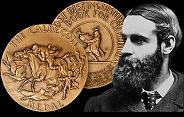
In 1938 the first Randolph Caldecott Medal for the most distinguished American picture book for children by a U.S. citizen or resident is awarded by the Am. Library Assoc. to Dorothy P. Lathrop.

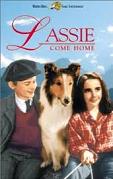


In 1940 Menston, West Yorkshire, England-born novelist Eric Oswald Mowbray Knight (1897-1943) pub. Lassie Come-Home, set in Depression-era Yorkshire, England, where Mr. and Mrs. Carraclough are forced to sell their collie to the rich Duke of Rudling, who takes him to Scotland, where his granddaughter Priscilla helps him escape back to despondent young Joe Carraclough. On Oct. 7, 1943 Fred M. Wilcox's Lassie Come Home (MGM) debuts, based on the 1940 Eric Knight novel, starring Roddy McDowall as Joe Carraclough, Elizabeth Taylor as Priscilla, Donald Crisp and Elsa Lanchester as Mr. and Mrs. Carraclough, and Nigel Bruce as the Duke of Rudling; does $4.5M box office on a $666K budget; the first of seven films (1943-51) about the smart collie (Lassie, not Liz), played by Rudd's Rough Collie Pal (1940-58), owned by Engle, N.M.-born trainer Ruddell Bird "Rudd" Weatherwax (1907-85). On Sept. 12, 1954 Lassie (B&W) debuts on CBS-TV (until Mar. 24, 1973), created by producer Robert Maxwell Joffe (1908-71) and Engle, N.M.-born animal trainer Russell Bird "Rudd" Weatherwax (1907-85), and starring Rudd's Rough Collie Pal (1940-58) as Lassie, Thomas Noel "Tommy" Rettig (1941-96) as Jeff Miller, and Jan Clayton (1917-83) as his mother Ellen; in season 4 Rettig is replaced by Jonathan Bion "Jon" Provost (1950-) as Timmy Martin, with Cloris Leachman (1926-) as his adoptive mother Ruth, who is replaced in season 5 by June Lockhart (1925-); written by Sumner Arthur Long (1921-93); switches to color in 1965.
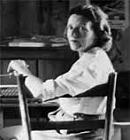
In 1941 Cape May Point, N.J.-born Mary O'Hara (Alsop) (1885-1980) pub. My Friend Flicka; 10-y.-. Ken McLaughlin, his father Rob, mother Nell, older brother Howard, and part-mustang sorrel filly Flicka (Swedish for little girl), who tries to jump a barbed wire fence on the Goose Bar Ranch in Wyo., and gets a near-fatal infection, which is cured by a night in a brook; followed by "Thunderhead" (1943), "Green Grass of Wyoming" (1946); writes it at the Remount Ranch near Cheyenne, Wyo.; filmed in 1943 starring Roddy McDowall; turned into a CBS/NBC TV series in 1956-7.

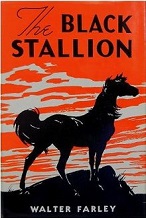
In 1941 Syracuse, N.Y.-born Walter Lorimer Farley (1915-89) pub. The Black Stallion, a bestseller about an Arab sheikh's wild stallion Shetan (The Black), who is shipwrecked on a deserted island with redheaded teenie Alec Ramsay, who becomes his owner, befriending racehorse trainer Henry Dailey, who helps him defeat champions Cyclone and Sun Raider; followed by "The Black Stallion Returns" (1945), in which the sheikh returns and claims him, causing Alec to follow him to Arabia and win his first offspring Satan as a gift; "Son of the Black Stallion" (1947), in which he tries to tame Satan, "The Island Stallion" (1948), about discovering the wild stallion Flame on the remote Caribbean island Azul; "The Black Stallion and Satan" (1949), in which Alec inherits the Black and finds out which is fastest in a forest fire; "The Blood Bay Colt" (1951), the Black's 2nd offspring Bonfire, who becomes a harness racer; "The Island Stallion's Fury" (1951); "The Black Stallion's Filly" (1952); the Black's 3rd offspring Minx, who is trained for the Kentucky Derby; "The most famous fictional horse of the century" (NYT); filmed in 1941, 1983, and 2003; reaches 20 sequels by 1989.

In 1943 6'6" Llandaff, Cardiff, Wales-born British fighter pilot-turned-writer Roald Dahl (1916-90) pub. his first children's book The Gremlins (first children's book); RAF fighter pilot Gus has his Hawker Hurricane fighter destroyed over the English Channel by a gremlin to get even for destroying their forest home to make an aircraft factory, but he convinces them to help him fight the Nazis, becoming aircraft repairmen; their babies are called widgets; their females are called fifinellas, after filly Fifinella, who won the Epson Derby and Epsom Oaks in 1916, his birth year; a project by Disney to film it is scrapped because of problems getting rights from the RAF. He follows with James and the Giant Peach (1961); 4-y.-o. English orphan James Henry Trotter loses his family in S England to an escaped rhino, and is forced to live with mean aunts Spoker and Sponge near the White Cliffs of Dover for three years, until he meets an old man who gives him a recipe for a magic potion that will bring happiness and great adventures, but he spills it onto a barren peach tree, which produces a gigantic magical peach as big as a house, which has a secret room where he meets six magically-altered garden bugs, who free the house to roll through the village, killing the aunts and falling over the cliffs into the English Channel, where 500 seagulls fly it across the Atlantic Ocean, meeting the Cloud-Men above the clouds who control the weather, then to New York City, landing on top of the Empire State Bldg, where they are welcomed as heroes, the giant peach pit becoming a mansion in Central Park, where they all live happily forever. He follows with Charlie and the Chocolate Factory (1964); eccentric candymaker Willy Wonka sends out five Golden Tickets, which are found by Augustus Gloop, Veruca Salt, Violet Beureguarde, Mike Teavee, and Charlie Bucket, and after the others are done in, Charlie receives the prize to a song composed by the Oompa Loompas (originally skinny black pygmies who work for cacao beans until complaints from the NAACP make him change to long golden-brown-haired rosy-white-skinned citizens of Loompaland in 1973); don't miss the coconut-ice skating rinks, cows that give chocolate milk, edible marshmallow pillows, hot ice creams for cold days, invisible chocolate bars for eating in class, lickable wallpaper, etc.; "These two very old people are the father and mother of Mr. Bucket" (first line); filmed in 1971 and 2005; followed by "Charlie and the Great Glass Elevator" (1972). On Oct. 1, 1988 he pub. Matilda; precocious practical joker Matilda astounds her teacher Miss Jennifer Honey, who tries in vain to get her moved ahead until she discovers that she has the power of telekinesis; filmed in 1996 starring Mara Wilson.

In 1943 Lyon-born French aristocrat-poet-aviator Antoine de Saint-Exupery (Antoine Marie Jean-Baptiste Roger, Comte de Saint Exupéry) (1900-44) pub. The Little Prince (Le Petit Prince); a pilot is stranded in the desert and meets a young prince fallen to Earth from house-size Asteroid B-612, who imagines himself to be a horticulturist, with a special rose, who digs on a philosophical fox, who utters the soundbytes: "One sees clearly only with the heart. What is essential is invisible to the eyes" (On ne voit bien qu'avec le coeur. L'essentiel est invisible pour les yeux), "You become responsible, forever, for what you have tamed" (Tu deviens responsable pour toujours de ce que tu as apprivoisé), "It is the time you have lost for your rose that makes your rose so important" (C'est le temps que tu as perdu pour ta rose qui fait ta rose si importante), "Grownups never understand anything by themselves, and it is tiresome for children to always be explaining things to them", "If anybody wants a sheep, that is a proof that he exists", "A single event can awaken within us a stranger totally unknown to us. To live is to be slowly born."

In 1943 Westborough, Mass.-born historian-novelist Esther Louise Forbes (1891-1967) pub. the bestseller Johnny Tremain (Newbery Medal), set in Boston, Mass. during the Am. Rev. War; filmed in 1957 by Walt Disney.
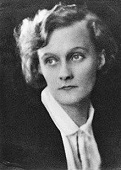
In 1945 Vimmerby, Sweden-born Astrid Anna Emilia Lindgren (nee Ericsson) (1907-2002) pub. Pippi Longstocking, a bestseller (tr. into 60 languages) about a 9.-o.-o. Swedish redhead orphan (daughter of Capt. Ephraim Longstocking of the Hoptoad, who vanished at sea) (full name Pippilotta Delicatessa Windowshade Mackrelmint Ephraim's Daughter Longstocking) with 90-degree pigtails who has superhuman strength, is smarter than adults, and lives in Villa Villekulla Cottage "at the end of a little Swedish town"; her best friends are her horse, her monkey, and neighbor children Tommy and Annika; "Way out at the end of a tiny little town was an old overgrown garden, and in the garden was an old house, and in the house lived Pippi Longstocking" (first sentence); first of 11 (1945-2000); she goes on to sell 140M+ books worldwide.

In 1945 Mount Vernon, N.Y.-born "The Elements of Style" writer E.B. (Elwyn Brooks) White (1899-1985) pub. his first children's book Stuart Little, a big hit with kids; critics either love it or hate it, but nobody has no opinion about it?; New York City talking mouse with a "shy pleasant manner", born to human parents, who likes racing model sailboats in Central Park, and whose enemy is Snowbell the Cat, who scares his friend Margalo the Bird out of town, causing him to take off in a gasoline-powered model car to search or it and comes to Ames Crossing, where he dates Harriet Ames before moving on; filmed in 1999 by Rob Minkoff. On Oct. 15, 1952 he pub. the bestseller Charlotte's Web, which becomes the best-selling children's paperback of all time; after Wilbur the Pig is nurtured from infancy by Fern Arable and sold to her uncle Homer Zuckerman, his barnyard spider friend Charlotte A. Cavatica saves him from being slaughtered by writing messages ("Some Pig", etc.) in her web, which the neighbors ascribe to divine intervention, making him too popular to eat; Templeton the Rat helps them only when bribed with food; after exhausting herself laying eggs, Charlotte dies, and three of the hatchlings (Joy, Nellie, Aranea) become Wilbur's new friends; "'Where's papa going with that ax?' said Fern to her mother" (first line); Templeton the Rat helps them only when bribed with food; after exhausting herself laying eggs, Charlotte dies, and three of the hatchlings (Joy, Nellie, Aranea) become Wilbur's new friends; "'Where's papa going with that ax?' said Fern to her mother" (first line); "No one was with her when she died" (last line); filmed in 1973, 2003, and 2006. In 1970 he pub. The Trumpet of the Swan; trumpeter swan Louis has no voice, so he uses a real trumpet, is taught to read and write by boy Sam, and hooks up with female swan Serena.

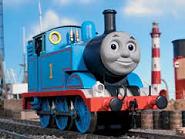
In 1946 Ampfield, Hampshire, England-born Anglican Rev. Wilbert Vere Awdry (1911-97) pub. Thomas the Tank Engine, about an undersized tank engine (based on the 1913 E2 Class designed by Lawson Billinton) who is known as a fuck-up until he becomes useful after an accident and is rewarded with his own branch line; becomes a TV series in 1979.
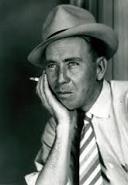
In 1947 Mason, Tex.-born Frederick Benjamin "Fred" Gipson (1908-73) pub. Hound-Dog Man, a bestseller (250K copies) about a hunting trip in 1912 by Clint McKinney, his younger brother, and womanizing friend Blackie Scantling; filmed in 1959. In 1956 he pub. Old Yeller (Newbery Medal); Tex. teenie Travis Coates takes care of the ranch incl. mother and younger brother Arliss after daddy goes on a cattle drive after the U.S. Civil War, and adopts a dog whose bark sounds like a human yell; after Old Yeller rescues the family from several scrapes, it is bitten by a rabid wolf and put down, but leaves some puppies incl. Savage Sam; filmed in 1957 by Walt Disney; followed by Savage Sam (1962), and Little Arliss (1978) (posth.).

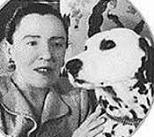
In 1949 after establishing herself as a playwright and having to flee to Doylestown, Penn. because of legal difficulties with her conscientious objector hubby Alec Macbeth Beesley, Whitefield, Lancashire-born English writer Dorothy Gladys "Dodie" Smith (1896-1990) pub. her first children's novel I Capture the Castle, about teenie Cassandra Mortmain and her eccentric family, who live in genteel poverty in a decaying castle in the 1930s; turned into a play in 1954, and filmed in 2003. She follows with The One Hundred and One Dalmatians; or, The Great Dog Robbery (1956), about the Dearlys, whose 15 Dalmatian puppies are kidnapped by Cruella de Vil to skin them for their fur, and held in Hell Hall in Suffolk; the Dalmatian parents are Pongo and Missis, who use runaway liver-spotted Perdita ("lost") as a wet nurse, while Perdita pines for her lost lover Prince; after the puppies use "Twilight barking" to send a distress message, the adults steal away to rescue them, gaining the aid of old English Sheepdog the Colonel; Cruella holds 97 puppies hostage, the four adult Dalmations making you know what; the nannies are Nanny Cook and Nanny Butler; Mr. Dearly is a "financial wizard" who helped eliminate the govt.'s debt and is given lifetime tax exemption and a house on the Outer Circle in Regent's Park, London; filmed by Disney in 1961 as "One Hundred and One Dalmatians", and again as a live action film in 1996 starring Glenn Close as Cruella. In 1967 she pub. the sequel The Starlight Barking, about E.T. dog Sirius, Lord of the Dog Star, who puts all humans and non-dogs to sleep, and summons the dogs to Nelson's Column in Trafalgar Square to ask them if they want to stay or come home with him.
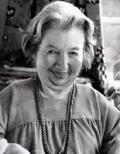
In 1950 after being stricken with Still's Disease in infancy and not learning to read until age 9, after which she gets inspired by Geoffrey Trease, East Clandon, Surrey-born English children's novelist Rosemary Sutcliff (1920-92) pub. her first book The Chronicles of Robin Hood. She follows with The Eagle of the Ninth (1954), set in 2nd cent. C.E. Roman Britain, first in the Roman Britain Series, linked by the Aquila family dolphin ring, incl. The Silver Branch (1957), and The Lantern Bearers (1959), set after the Romans withdraw from Britain, and Frontier Wolf (1980). In 1971 she pub. Tristan and Iseult, a retelling of the Arthurian story, followed by her Arthurian Trilogy incl. The Sword and the Circle (1981), The Light Beyond the Forest (1979), and The Road to Camlann (1981). In 1990 she pub. The Shining Company, a retelling of the Y Gododdin story. In 1992 she is created Commander of the Order of the British Empire.
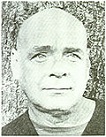
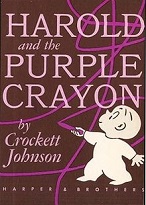
In 1955 New York City-born writer-cartoonist Crockett Johnson (David Johnson Leisk) (1906-75) pub. Harold and the Purple Crayon, about 4-y.-o. Harold, who can create a world of his own by drawing it.
In 1955 the Kate Greenaway Medal is established in Britain for the most "distinguished illustration in a book for children"; the first winner (1957) is Edward Jeffrey Irving Ardizzone (1900-79) for "Tim All Alone" (1956).
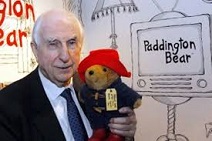
On Oct. 13, 1958 Newbury, Berkshire, England-born Thomas Michael Bond (1926-2017) pub. A Bear Called Paddington, about a polite spectacled bear from Darkest Peru who wears an old red or yellow bush hat and battered blue coat and carries a battered suitcase with marmalade sandwiches; bestseller (30M copies); in 1994 a Paddington Bear soft toy becomes the first item to pass through the Chunnel.
In 1958 the Lewis Carroll Shelf Awards are established by the U. of Wisc.-Madison for books that "belong on the same shelf" with Carroll's "Through the Looking-Glass" and "Alice's Adventures in Wonderland"; 17 books are awarded in 1958; the last seven awards are given in 1979.

In 1960 Newton, Mass.-born Nathaniel Benchley (1915-81) (father of Peter Benchley) pub. Sail a Crooked Ship (filmed in 1961), and Sinbad the Sailor, a hit children's book. In 1961 he pub. The Off-Islanders; filmed in 1966 by Norman Jewison as "The Russians Are Coming, the Russians Are Coming", starring Alan Arkin. In 1964 he pub. Catch a Falling Spy; A Winter's Tale. In 1965 he pub. The Visitors. In 1966 he pub. The Monument. In 1968 he pub. Welcome to Xanadu; 16-y.-o. Doris Mae Winter is kidnapped by psycho Leonard and held in a cabin in the mountains, and comes to like him. In 1969 he pub. The Todd Dossier. In 1971 he pub. Lassiter's Folly. In 1976 he pub. A Necessary End: A Novel of World War II. In 1979 he pub. Portrait of a Scoundrel. In 1980 he pub. Sweet Anarchy. In June 1981 he pub. All Over Again. In 1982 Speakeasy is pub. posth.
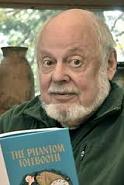
In 1961 after receiving a $5K grant from the Ford Foundation to write a children's book about cities, Brooklyn, N.Y.-born architect Norton Juster (1929-) pub. The Phantom Tollbooth (Random House), about young Milo and his magic tollboth, which transports him to the Kingdom of Wisdom, where he rescues Princess Rhyme and Princess Reason from the castle in the air, becoming the 20th cent. "Alice's Adventures in Wonderland". In 1963 he pub. The Dot and the Line: A Romance in Lower Mathematics (Random House), inspired by Edwin Abbott's "Flatland: A Romance of Many Dimensions" (1884). In 1969 he pub. Stark Naked: A Paranomastic Odyssey (Random House), set in Emotional Heights, home of Get High (principal Martin Nett), the Walter Wall Rugs business district, Chef Al Dente's restaurant, and the Duston Toodust Cemetery.

In 1962 New York City-born Madeleine L'Engle (1918-2007) pub. A Wrinkle in Time, a children's sci-fi classic about 14-y.-o. Meg Murry, with 10-y.-o. twin brothers Sandy and Dennys, 5-y.-o. supergenius brother Charles Wallace, a beautiful scientist mother, and mysterious scientist father, who went missing after working on the Tesseract; filmed in 2003 as a TV movie by Disney, and in 2018 by Ava DuVernay.

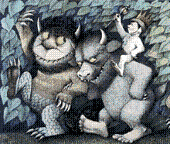
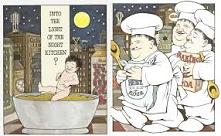
In 1963 after losing many family members in the Holocaust, messing his mind up, Brooklyn, N.Y.-born writer-illustrator ("the Picasso of Children's Books") Maurice Bernard Sendak (1928-2012) pub. Where the Wild Things Are (Caldecott Medal), which becomes a big hit with kids, esp. the cool illustrations; Max "rages against his mother for being sent to bed without any supper", then dresses up in a wolf suit and travels to the Land of the Wild Things, becoming king before returning to his bedroom and finding his supper waiting; the theme of all his work is surviving danger; followed by "In the Night Kitchen" (1970), "Outside Over There" (1981). In 1970 he pub. In the Night Kitchen; young Mickey's dream journey through the surrealistic Night Kitchen, where he helps the baker create a cake that has to be ready by morning; nude illustrations of toddlers piss-off U.S. PC police? In 1977 he pub. Seven Little Monsters. In 1981 he pub. Outside Over There; young Ida has to rescue her baby sister who has been kidnapped by goblins, blowing her wonder horn and donning her mother's yellow rain cloak, then exiting the window backwards and entering you know what.


On Oct. 7, 1964 Chicago, Ill.-born writer-cartoonist-musician" Sheldon Allan "Shel" Silverstein (1930-99) (AKA Uncle Shelby), composer of the hit song "A Boy Named Sue" pub. the children's picture book The Giving Tree (bestseller, 8.5M copies), about a boy and a female apple tree, who go through life together in a giving-taking relationship; "Once there was a tree... and she loved a little boy" (opening). He follows with the books of children's poems Where the Sidewalk Ends (1974), and A Light in the Attic (1981).

On Oct. 22, 1964 Mayfair, London-born "James Bond 007" British novelist Ian Lancaster Fleming (1908-64) pub. the children's novel Chitty-Chitty-Bang-Bang (3 vols.); Cmdr. Caractacus Pott buys and renovates the Paragon Panther 4-seat touring car, which proves to have intelligence; filmed in 1968.

In 1964 Memphis, Tenn.-born writer-illustrator Louise Fitzhugh (1928-74) pub. Harriet the Spy, "a milestone in children's literature", about 11-y.-o. Harriet M. Welsch, an aspiring writer in Upper East Side, New York City who likes to wear high-top sneakers and eat tomato sandwiches, and is encouraged by her nanny Ole Golly to become a spy and write it all down in a notebook; too bad, she loses it during a game of tag, and her classmates find it, forming the Spy Catcher Club to make her life miserable, starting a war; praised for its realism and damned for giving kids bad ideas; accused of promoting gayness because Fitzhugh is a lesbian and because of the Boy with the Purple Socks.

In 1964 Yorkshire, England-born writer (Methodist minister) J.P. (John Percival) Martin (1879-1966) pub. the novel Uncle, first in a 6-book children's series (1964-73) about a millionaire elephant with a B.A. from Oxford U. who likes to wear a purple dressing gown in his home called Homeward, and whose clean past is marred by one discreditable incident of stealing a bicycle, which his enemies plague him with; friends incl. Old Monkey, One-Armed Badger, Goodman the Cat, Noddy Ninety, Cloutman, the King of the Badgers, and Butterskin Mute; his enemies are the inhabitants of Badfort Castle, whose estate blights the landscape in front of his Homeward Castle; "Homeward is hard to describe, but try to think of about a hundred skyscrapers all joined together and surrounded by a moat with a drawbridge over it, and you'll get some idea. The towers are of many colours, and there are bathing pools and gardens amongst them, also switchback railways running from tower to tower, and water-chutes from top to bottom"; Badfort gang it nominally headed by the Hateman family, Beaver, Nailrod Snr, Nailrod Jnr, Filljug, and Sigismund, with the support of Flabskin, Oily Joe, the dwarvish, cowardly, skewer-throwing Isidore Hitmouse, the scheming ghost Hootman, and Jellytussle, an animated mound of bluish jelly."

In 1967 Tulsa, Okla.-born h.s. student S.E. (Susan Eloise) Hinton (1948-) pub. her first novel The Outsiders, a bestseller (14M copies), based on rival gangs at Will Rogers H.S. in Tulsa, Okla.; narrated by Ponyboy Curtis, about the war between the working class Greasers (incl. brothers Ponyboy, Sodapop, and Darrel "Darry" Curtis, Johnny Cade, Dallas "Dally" Winston, Keith "Two-Bit" Matthews) and the wealthy privileged Socs (Soshes) (Cherry Valance, Marcia, Bob Sheldon, Randy Anderson); she writes most it at age 16, and it becomes a junior high and senior high school library hit, revolutionizing young adult fiction with realistic portrayals; too bad, she then suffers a 3-year writer's block; "When I stepped out into the bright sunlight from the darkness of the movie house, I had only two things on my mind: Paul Newman and a ride home..." (first and last sentence); filmed in 1983. In 1971 she pub. That Was Then, This Is Now; Mark and Byron deal with street fighting and girls. In 1975 she pub. Rumble Fish; named after the Siamese fighting fish; filmed in 1983. In 1979 she pub. Tex; "Bambi by another character". In 1988 she pub. Taming the Star Runner.

In 1969 Elizabeth, N.J.-born writer Judy Blume (Judith Sussman) (1938-) pub. her first juvenile novel The One in the Middle Is the Green Kangaroo, about 2nd-grader Freddy Dissel, a middle child who feels neglected and lands a role in a school play to get attention, introducing realism into juvenile lit. In 1970 she pub. Iggie's House, about Winnie, whose best friend Iggie moves away, after which black people move into her house, and she makes friends with them, facing racism from parents et al. In 1970 she pub. Are You There God? It's Me, Margaret, about a pre-teenie who has to cope with her first brad, first period, boys, etc. In 1972 she pub. It's Not the End of the World, about Karen, whose parents divorce; she follows with Here's to You, Rachel Robinson (1993), In 1972 she pub. Tales of a Fourth Grade Nothing, about 2-y.-o. Farley Drexel Hatcher, who prefers the name Fudge, and his 9-y.-o. brother Peter Warren Hatcher, who is jealous of how his younger brother's horrendous behavior often goes unpunished; she follows with Superfudge (1980), Fudge-a-Mania (1990), and Double Fudge (2002). In 1972 she pub. Otherwise Known as Sheila the Great, about Peter Hatcher's rival Sheila Tubman, who suffers from all kinds of phobias. In 1973 she pub. Deenie, about 13-y.-o. Wilmadeene "Dennie" Fenner, who is diagnosed with scoliosis, and relieves tensions by masturbating, causing it to be banned by schools; "I touched my special place practically every night. It was the only way I could fall asleep and besides, it felt good"; "Usually I take showers and get in and out as fast as possible. But the hot water was very relaxing and soon I began to enjoy it. I reached down and touched my special place with the washcloth. I rubbed and rubbed until I got that good feeling." In 1974 she pub. Blubber, about Penn. 5th-grader Jill Brenner, who joins classmates in bullying fat girl Linda, who gave a class report about whales, earning the nickname Blubber. In 1975 she pub. Forever..., an adolescent novel that updates sexuality, "a book that didn't equate sex with punishment", getting it censored by schools; "Sybil Davison has a genius I.Q. and has been laid by at least six different guys." In 1993 she pub. Just as Long as We're Together, about Stephanie "Steph" Hirsch and her friendship triangle with Rachel Robinson and Alison Monceau. Blume goes on to sell 80M copies.
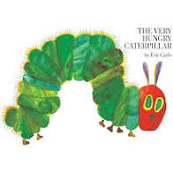

In 1969 Syracuse, N.Y.-born Eric Carle (1929-) pub. the bestseller (50M copies) The Very Hungry Caterpillar, a children's picture book about the life stages of a caterpillar; first pub. in Japan because no U.S. publisher could handle so many holes.

In Nov. 1972 after reading British naturalist Ronald Lockley's 1964 work "The Private Life of the Rabbit", Newbury, Berkshire, England-born Richard George Adams (1920-) pub. his first novel Watership Down, a bestseller (50M copies) about a small group of literate cultured Lapine-speaking rabbits, who trek to a new home in Watership Down Hill in N Hampshire, England, led by psychic seer rabbit Fiver; inspired by 247-acre Skokholm Island off the coast of SW Wales, a breeding area for sea birds; rejected by seven publishers before Rex Collings takes a chance on it; filmed in 1978; Fiver, his brother Hazel, Bigwig, Blackavar, Kehaar, Silver, Pipkin; the police state of Efrafa under Gen. Woundwort; folk hero El-ahrairah, sun god Lord Frith, grim reaper Black Rabbit of Inle (Moon).

In 1973 Buffalo, N.Y.-born Elizabeth Levy (1942-) pub. Something Queer Is Going On (The Fletcher Mysteries); illustrations by Mordicai Gerstein; amateur sleuths Jill and Gwen (known for tapping her dental braces), and Jill's basset hound Fletcher; first in a series.

In 1977 Honolulu, Hawaii-born writer Lois Lowry (Lois Ann Hammersberg) (1937-) pub. her first children's novel A Summer to Die, about Meg and her sister Molly, who go to a country house in the summer, where Molly is diagnosed with leukemia. In 1989 she pub. Number the Stars (Newbery Medal), about a Jewish family trying to escape from Copenhagen in WWII. In 1993 she pub. The Giver (Newbery Medal), about 12-y.-o. Jonas, who lives in a utopian society which has eliminated pain and strife with Sameness, becoming the official Receiver of memory and struggling with stories of life without Sameness; the first young adult dystopian novel? In 2002 she pub. Gooney Bird Greene, about a 2nd grade girl who transfers to Mrs. Pidgeon's class in Watertower, and is assigned a series of autobio. tales that are "only absolutely true".

On Aug. 1, 1978 Albany, N.Y.-born Gregory Maguire (1954-) pub. his first children's novel The Lightning Time, about a New York City boy discovering the wonders of life in the Adirondacks, followed by 20+ more. In 1995 he pub. Wicked: The Life and Times of the Wicked Witch of the West, a NYT bestseller based on the 1900 novel "The Wizard of Oz" by L. Frank Baum, becoming his first non-children's novel, launching a new career of retelling fairy tales for adults, followed by "Son of a Witch" (2005), "A Lion Among Men" (2008), and "Out of Oz" (2011); basis of the 2003 Broadway musical "Wicked". In 1999 he pub. Confessions of an Ugly Stepsister; NYT bestseller; a retelling of the tale of Cinderella; made into a 2002 TV movie by Gavin Millar. In 2001 he pub. Lost (Oct. 2); Am. writer Winifred Rudge travels to London to visit distant cousin John Comestor, who is a relative of the man who inspired Charles Dicken's char. Ebenezer Scrooge, and discovers that he has vanished and his apt. is haunted. In 2003 he pub. Mirror, Mirror, a retelling of the tale of Snow White, about 16th cent. nobleman Don Vincente de Nevada of Montefior and his 7-y.-o. daughter Bianca. In 2010 he pub. The Next Queen of Heaven; the Scales family matriarch is driven half-mad by a blow to the head by a statue of the Virgin Mary; gay choirmaster Jeremy fights local nuns to find a practice room for his band. In 2015 he pub. After Alice, a retelling of Alice in Wonderland.
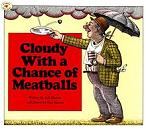
On Sept. 14, 1978 Brooklyn, N.Y.-born writer Judi Barrett (1941-) pub. Cloudy With a Chance of Meatballs, illustrated by her hubby Ron Barrett, about the town of Chewandswallow, where it rains food; filmed in 2009.

In 1980 St. Albans, Hertfordshire, England-born Michael Andrew Bridge Morpurgo (1943-) pub. The Nine Lives of Montezuma, the adventures of a farm cat. In 1982 he pub. War Horse, about young Albert, who attempts to bring his WWI Army horse Joey home; made into a play in 2007, and filmed in 2011. In 1984 he pub. Little Foxes, about orphan Billy Bunch, who has a stutter and runs away to a ruined monastery which has a family of four orphaned foxes. In 1985 he pub. Why the Wales Came, set on Bryher Island off the coast of Cornwall in 1914, about young Grace and Daniel, who befriend the deaf Birdman Mr. Woodcock who lives on cursed Samson Island and tries to save a school of whales. In 1990 he pub. Waiting for Anya, set in the mountainout Lescun region on the French-Spanish border, about Benjamin, a Jew who smuggles other Jews across the border to Spain during WWII, and loses his daughter Anya. In 1995 he pub. The Wreck of the Zanzibar, about 14-y.-o. watercolor artist Laura Perryman in 1907-8 who helps save one of Britain's Scilly Ises. In 1996 he pub. The Butterfly Lion, about a young boy who runs away from a boarding school in Wiltshire, England and meets old woman Millie, who tells him the story of Bertie, who rescued the white butterfly lion club and saw it sold to a circus before being reunited with it and marrying her, later finding out she died long before. In 1999 he pub. Kensuke's Kingdom, about young Michael, who travels around the world with his parents on the yacht Peggy Sue, and is washed overboard with his dog Stella Artois near Papua New Guinea, ending up on a deserted peanut-shaped island where he meets elderly Japanese man Kensuke. In 2000 he pub. Billy Kid, about 80-y.-o. Chelsea pensioner Billy, who looks back on his life and his career as soccer player Billy the Kid. In 2003 he pub. Private Peaceful, about soldier Thomas "Tommo" Peaceful in the trenches of Belgium in WWI and the horrors of war and unjust execution of soldiers for cowardice and desertion; turned into a play in 2004 by Simon Reade; filmed in 2012 by Pat O'Connor. In 2003-5 he becomes British Children's Laureate #3. In 2006 he pub. Alone on a Wide, Wide Sea, about London orphan Arthur Hobhouse who was transported at age five to Australia. In 2009 he pub. Running Wild, about Will, who loses his father in the Iraq War and witnesses the 2004 Boxing Day Tsunami on top of his elephant Oona.

In Apr. 1985 Cheyenne, Wyo.-born writer Patricia MacLachlan (1938-) pub. Sarah, Plain and Tall (Newbery Medal), about late 19th cent. widowed Kan. prairie farmer Jacob Witting, with two children, Anna and Caleb, who advertises for a mail-order wife, and receives plain tall Sarah from Maine, who gets homesick, faces rejection, but eventually wins the children's hearts, helping him get over his past wife and marry him; filmed in 1991 starring Glenn Close and Christopher Walken; sequels are "Skylark" (1992), and "Winter's End" (1999) (set in 1915).
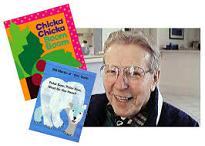
In 1989 Hiawatha, Kan.-born writer William Ivan "Bill" Martin Jr. (1916-2004) and John Archambault pub. the bestseller Chicka Chicka Boom Boom, illustrated by Lois Ehlert, about letters climbing in a coconut tree to a scat beat.

On July 28, 1992 Fort Sill, Okla.-born Mary Pope Osborne (1949-) pub. Dinosaurs Before Dark (Valley of the Dinosaurs), first in the 28-vol. Magic Tree House series (ends 2003), which sells 100M copies.

In 1992 Oakland, Calif.-born Amy Tan (1952-) pub. her first children's novel The Moon Lady. In 1994 she pub. Sagwa, the Chinese Siamese Cat, set during the Qing Dynasty ca. 1840, which becomes a PBS Kids series in 2001-4.

In June 1996 Ann Arbor, Mich.-born K.A. (Katherine Alice) Applegate (1956-) begins pub. the Animorphs ("animal morphers") young adult sci-fi series, reaching 54 books by May 2001; in 1998 it is made into a TV series on Nickelodeon; about five humans, Jake, Marco, Cassie, Rachel, and Tobias, and one alien, Aximili-Esgarrouth-Isthill (nicknamed Ax), who have the ability to transform into any animal they touch, using their ability to battle a secret alien infiltration of Earth by a parasitic race of aliens called Yeerks and their leader Visser Three, who resemble large slugs and take humans as a host by entering and merging with their brain through the ear canal. In 2011 she pub. The One and Only Ivan (Newbery Medal), about a silverback gorilla who has lived at the Big Top Mall for 9,855 days with Stella the Elephant and Bob the Dog, and has to take care of Ruby the Baby Elephant and wakes up to how bad Mack the mall owner is, using fingerpainting to paint protest signs.

On June 26, 1997 Yate, Gloucester-born Scottish welfare queen Joanne "Jo" "J.K." Rowling (1965-) pub. Harry Potter and the Philosopher's Stone, and sales begin to take off immediately, soon causing a healthy rise in Satanism among children as the Edinburgh welfare queen leaves the welfare rolls and becomes the richest woman in the U.K., selling 6.9M books in one 24-hour period; evil Lord Voldemort (formerly Tom Riddle AKA I Am Lord Voldemort) murders James and Lily Potter and disappears after attempting to kill their infant son Harry Potter, causing Prof. Dumbledore, Prof. McGonagall and half-giant Rubeus Hagrid to place them in the care of muggle uncle-aunt Vernon and Petunia Dursley and their spoiled bully son Dudley, who live at 4 Privet Dr., until on his 11th birthday at midnight Hagrud arrives, tells him he's a wizard, and has been accepted at Hogwarts School for Wizards; "Mr. and Mrs. Dursley... were proud to say that they were perfectly normal, thank you very much" (first line); the 7-novel series sells 400M copies (bestselling series in history), and incl.: Harry Potter and the Chamber of Secrets (1998); Harry Potter and the Prisoner of Azkaban (1999); Harry Potter and the Goblet of Fire (2000); Harry Potter and the Order of the Phoenix (2003), Harry Potter and the Half-Blood Prince (2005), and Harry Potter and the Deathly Hallows (2007); "I've met thousands of children, and not even one time has a child come up to me and said, 'I'm so glad I've read these books, because now I want to be a witch'" (Rowling) (instead of a muggle?); Harry Potter "the Boy Who Lived", Ron and Ginny Weasley, Hermione Granger, Muggle cousin Dudley Dursley and his pal Piers, Peeves, Draco Malfoy, Neville Longbottom (birthday one day before Harry), Sirius and Regulus Black, Remus J. Lupin, Peter "Wormtail" Pettigrew, Lupin, Moony, Padfoot, Prongs, Alastor "Mad Eye" Moody, Rubeus Hagrid, Hedwig and Errol the pet owls, Prof. Albus Dumbledore, Prof. Minerva McGonagall, Prof. Severus Snape, Prof. Flitwick, 9-3/4 King's Cross Station, Hogwarts School, Gryffindor House, Slytherin House, Ravenclaw House, Hufflepuff House, Godric Gryffindor, Salazar Slytherin, Rowena Ravenclaw, Helga Hufflepuff, Diagon Alley, Mirror of Erised, Lord Voldemort ("He-Who-Must-Not-Be-Named"), 3-headed dog Fluffy, Floo Powder, Bertie Bott's Every Flavour Beans (tar, earwax, mud), Quidditch, Nimbus 2000 broomstick, the missing Horcruxes, the Death Eaters.

In 1997 Dorsten, Germany-born "J.K. Rowling of Germany" Cornelia Maria Funke (1958-) pub. the NYT bestseller Dragon Rider, about human boy Ben, Firedrake the silver dragon, and Sorrel the brownie in their search for the Rim of Heaven mountain range in the Himalayas. In 2000 she pub. the NYT bestseller The Thief Lord, On Sept. 23, 2003 she pub. the NYT beseller Inkheart (Tintenherz), first in the Inkheart Trilogy, incl. "Inkspell" (2005) and Inkdeath (2007), about teenie Meggie Folchart, whose bookbinder daddy Mo has the ability to bring chars. from books to life; filmed in 2008; the series sells 20M+ copies worldwide.

On Sept. 30, 1999 San Francico, Calif.-born Lemony Snicket (Daniel Handler) (1970-) pub. The Bad Beginning, first in the bestselling "A Series of Unfortunate Events" (13 vols.) (1999-2006) (60M copies), about the Baudelaire orphans Violet (14), Klaus (12), and baby Sunny, whoss parents and spacious home were destroyed in a cataclysmic fire by evil Count Olaf, who becomes their designated caretaker and plots to steal their fortune, forcing them to perform odious chores in his filthy ramshackle house; friendly neighbor Justice Strauss, Carmelita "cakesniffer" Spats, former "tap-dancing ballerina fairy princess veterinarian" turned "ballplaying cowboy superhero soldier pirate"; Lucky Smells Lumber Mill, Anxious Clown Restaurant, vice-principal Nero.

In 1999 Hampstead, London-born writer Julia Catherine Donaldson (nee Shields) (1948-) pub. the rhyming children's picture book The Gruffalo (bestseller, 13.5M copies), based on the Chinese folk tale "The Fox that Borrows the Terror of a Tiger", becoming her biggest hit; on Sept. 3, 2004 it is followed by the bestseller The Gruffalo's Child, which is filmed in 2011. In 2000 she pub. the illustrated children's story book Monkey Puzzle, about a young monkey searching for her mother in a jungle with the aid of a confused butterfly. In 2002 she pub. the children's story book Room on the Broom, about a kind witch and her cat who invite a dog, a bird, and a frog to join them in their broomstick adventures; it is translated into 22 languages and made into an animated film narrated by Simon Pegg in 2013.
In 1999 the 2-year Children's Laureate position is established in the U.K. for a "writer or illustrator of children's books to celebrate outstanding achievement in their field"; the first award goes to Sir Quentin Saxby Blake (1932-) (1999-2001), followed by Anne Fine (1947-) (2001-3), Michael Morpugo (1943-) (2003-5), Dame Jacqueline Wilson (1945-) (2005-7), Michael Wayne Rosen (1946-) (2007-9), Anthony Edward Tudor Browne (1946-) (2009-11), Julia Catherine Donaldson (1948-) (2011-13), Malorie Blackman (1962-) (2013-15), and Chris Riddell (1962-) (2015-7).
In Jan. 2008 the U.S. Library of Congress establishes the Nat. Ambassador for Young People's Literature position; the first award goes to Jon Scieszka (1954-).
In May 2010 Ireland establishes the Laureate na nOg (Laureate na nÓg) position for best children's writer or illustrator; the first award goes to Niamh Sharkey.